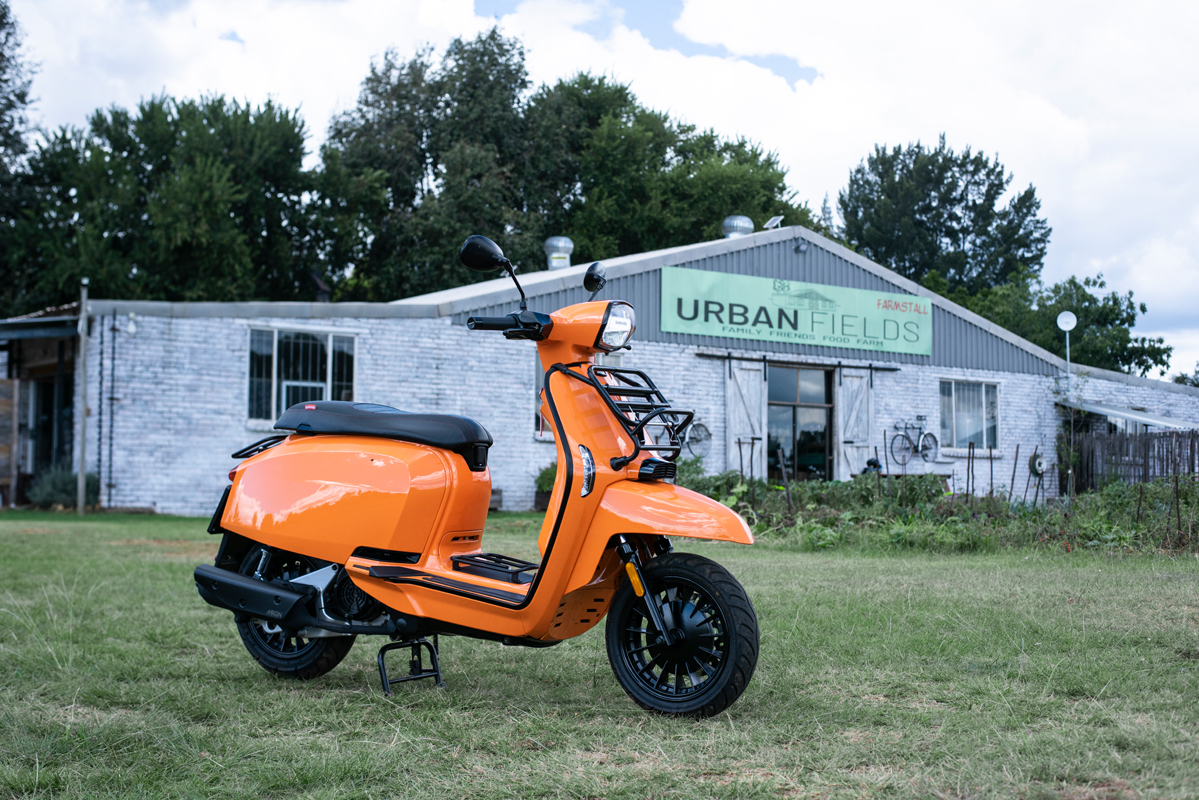
After riding the two-stroke 1950s rendition of Lambretta’s iconic 150d, I was more than curious to sample their modern offerings. First up is the V200, resplendent in bright orange, with unmistakable Lambretta lines. ‘200’ is a bit of a misnomer, as the fuel-injected air-cooled four-stroke single that powers the scoot displaces an actual 169cc. The motor is good for 8,8 kW @ 8,500 rpm and 12,2 Nm of torque @ 5,500 rpm.
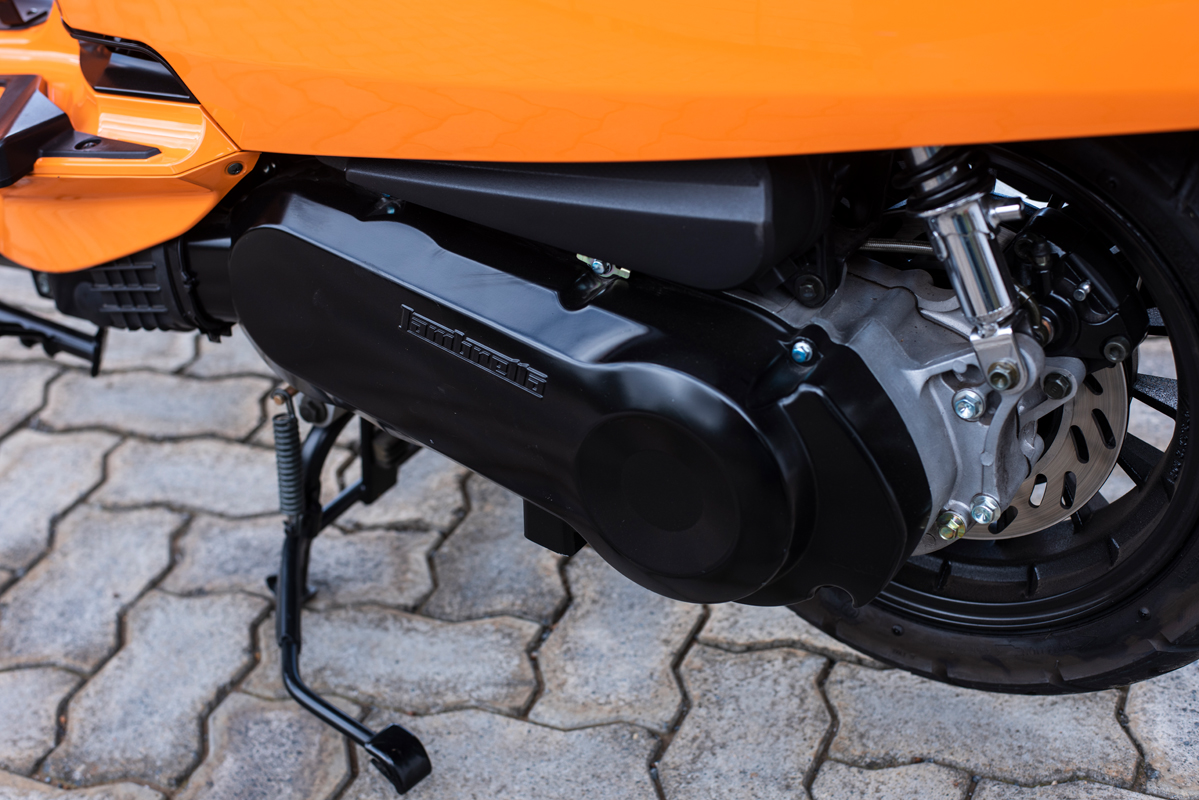
The test unit was equipped with three carrier racks, the most substantial of which attaches to the front of the scooter below the headlight. The second is on the floor between the riders’ feet (Givi make ‘Scooter bags’ specifically designed to be mounted to such racks) and the third is mounted above the rear taillight. The racks are powder-coated black, contrasting nicely with the flawless bright orange paint. The fit and finish are of a very high standard, with little Lambretta accents here, there, and everywhere.
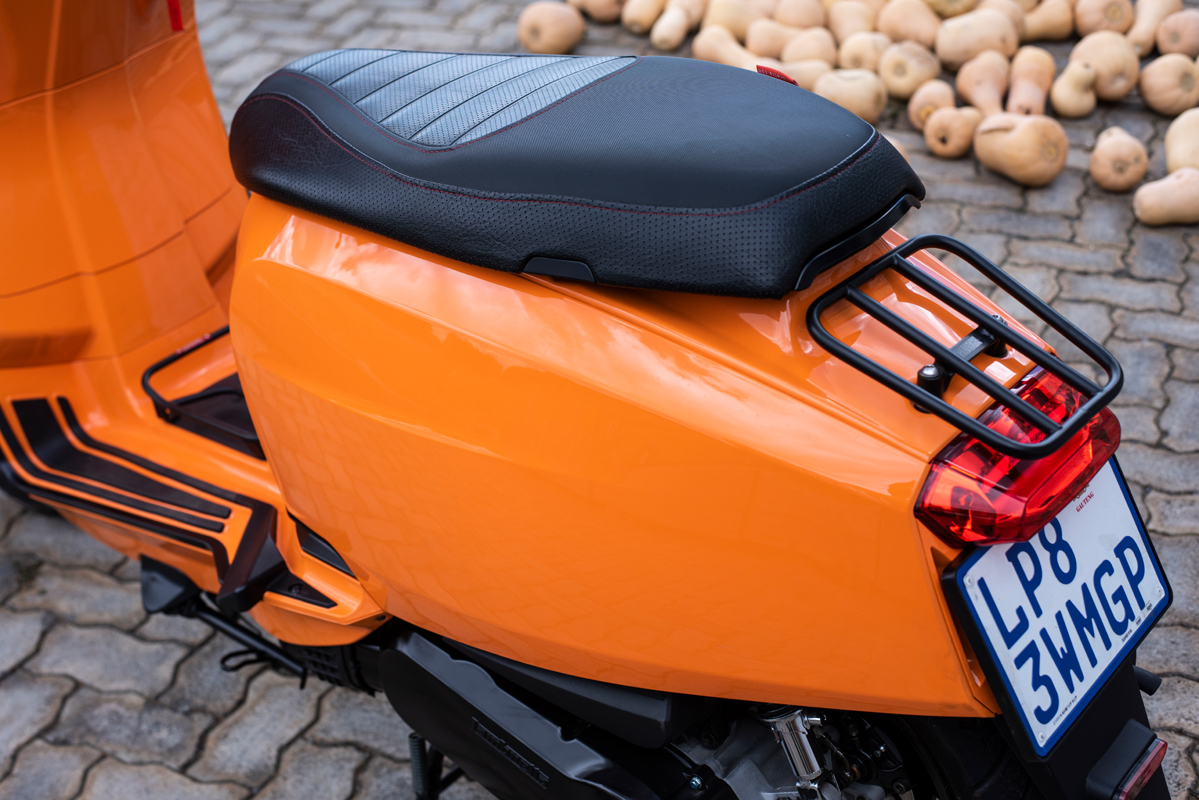
The LED headlight has Lambretta emblazoned across it. There is a Lambretta / Innocenti badge just below the headlight, as well as a red tag on the seat. Subtle and classy. The key too is red, embossed with a silver Lambretta name logo. Lifting the seat reveals a classy alloy fuel cap, with a storage space for oddments and a medium-sized helmet. The rack on the floor between the riders’ feet covers a rubber mat with the Lambretta lion logo which is reminiscent of the Peugeot logo. All in all, it is a classy-looking scooter. In typical Lambretta fashion, the front wheel turns independently of the front mudguard, which is fixed to the bodywork, and does not ride on the forks.
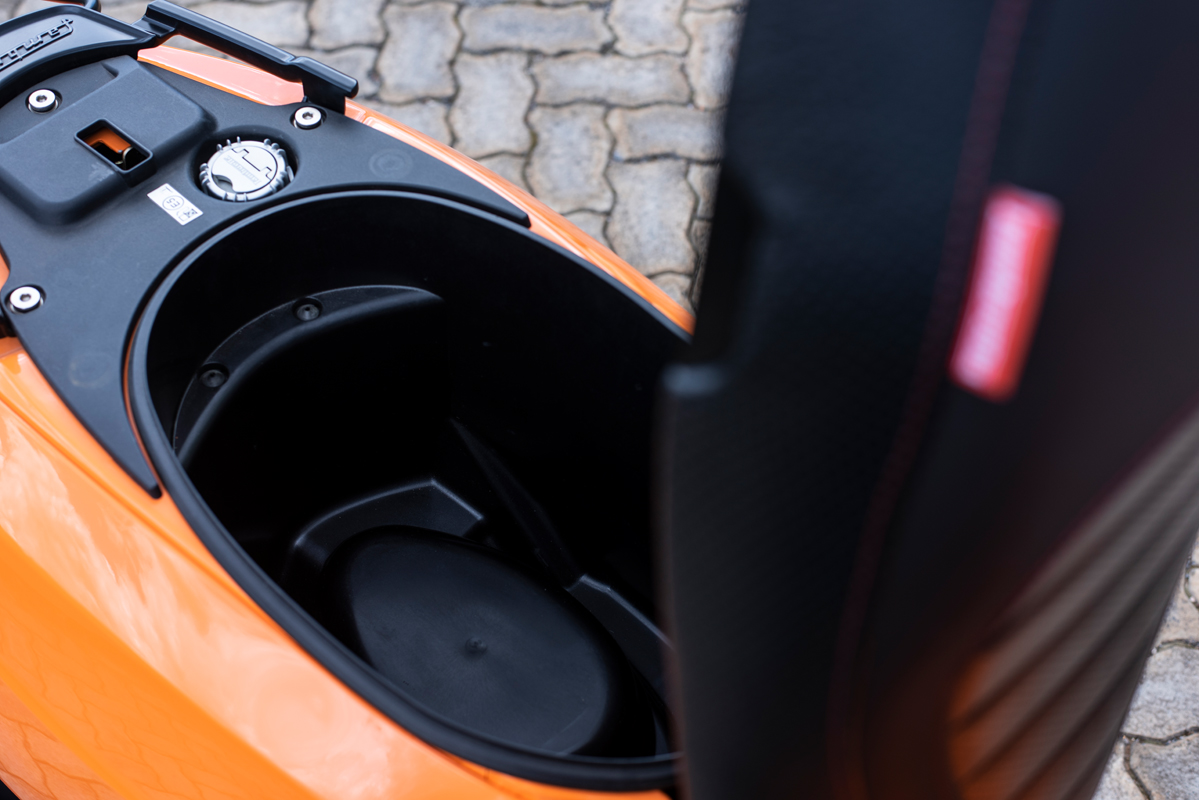
The chassis is a monocoque design which is light, strong and rigid. Twin rear shocks control rear wheel movement and telescopic forks sort out the front suspension. Wheels are 110/70-12 up front and 120/70-12 at the rear. Braking is via discs on both wheels which give powerful braking with a reassuring feel. It is uncanny how quickly the 200 stops. The fuel tank is 6L and this should be good for close to 200 k’s of urban commuting.
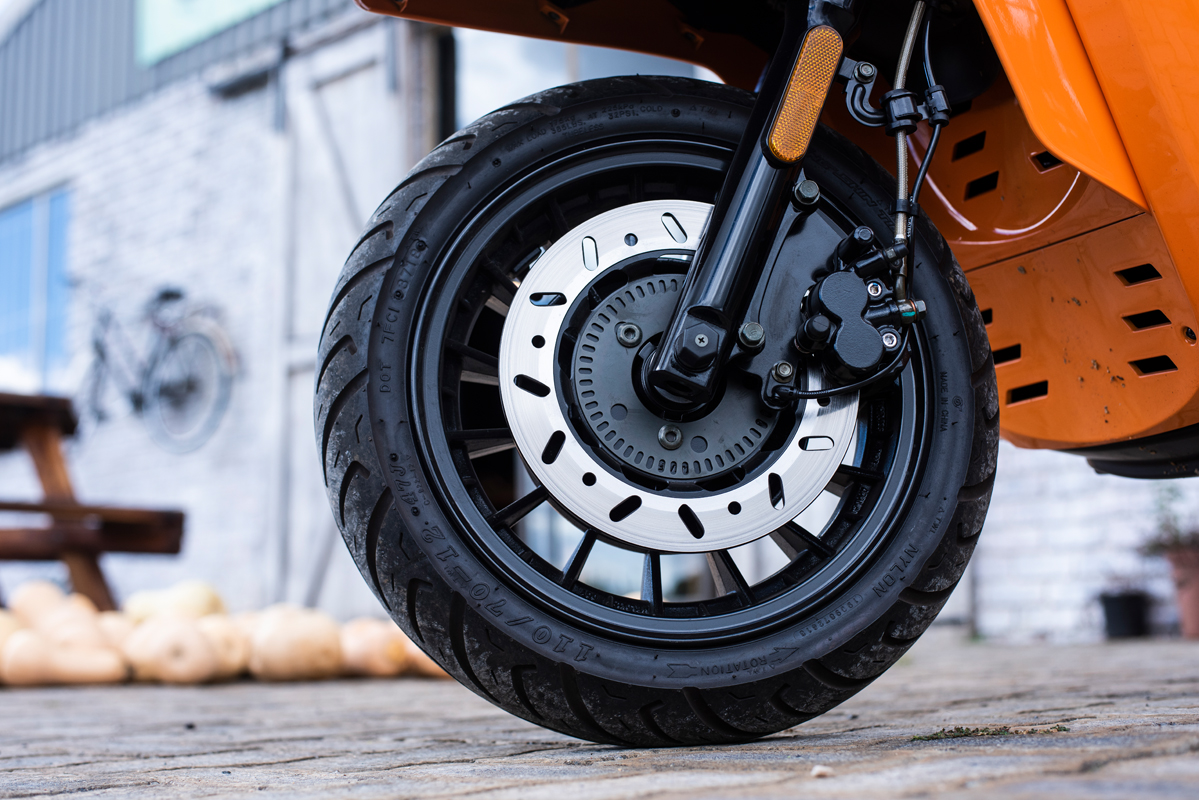
The scooter is equipped with both main and side stands. The motor will not fire up when the side stand is down, for safety reasons. The bike virtually puts itself on the main stand, really requiring minimum effort. A recessed storage space in front of your legs is equipped with a USB port as well as enough space for gloves or a scarf. It is accessed by twisting the ignition key clockwise. On the odd occasion, it needed a tap to open. The under-seat storage is accessed by a counterclockwise twist of the key, which pops the seat latch.
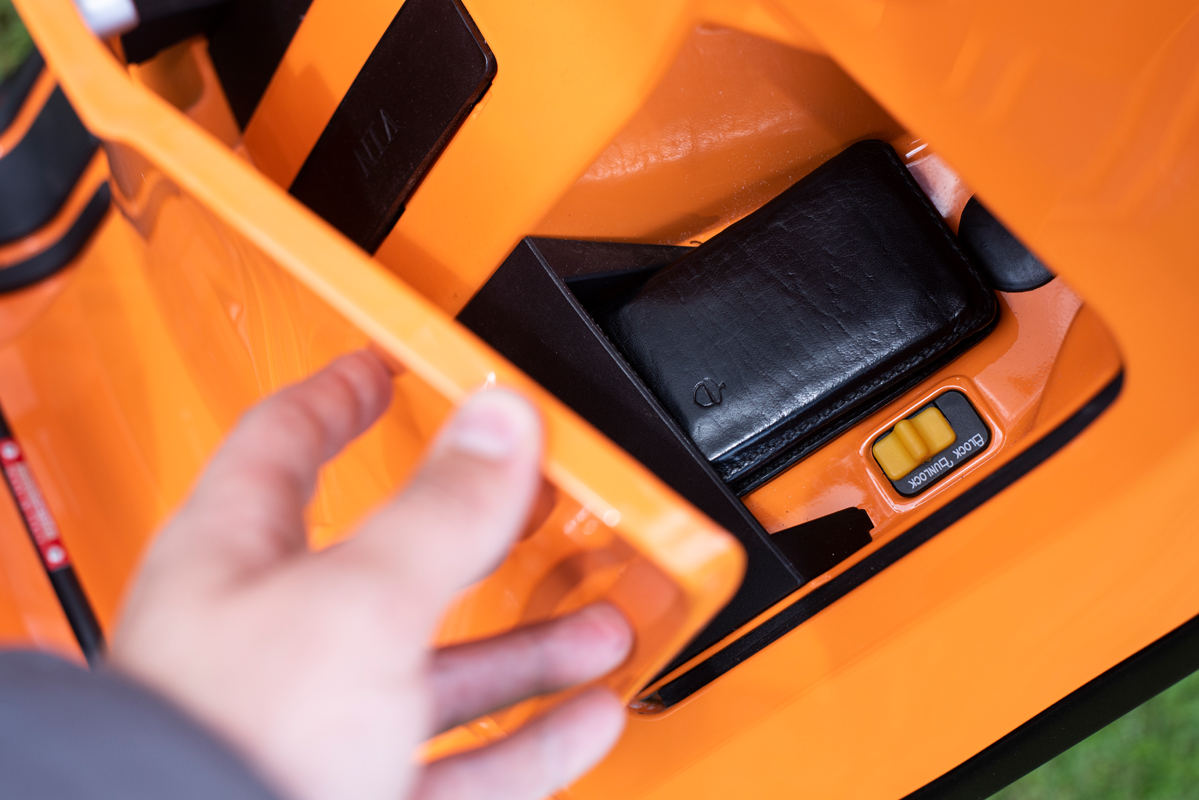
Hop on, twist the key to on, and the LCD display bids you a good day. The speedo is black on white up to 100 km/h whereafter it has a red background. A digital readout displays the engine rpm and trip and odo information. Fuel level runs vertically on the left of the display. Hold the brake and touch the starter on the right-hand bar and the motor literally jumps into life. Twist the throttle and off you go. The motor is lively from off the line and dispenses with typical traffic without bother. It tops out at 100 km/h and really feels punchy up to 80 km/h, which is perfect for taking on commuting duties in and around typical urban sprawl. It is stable and happy at 100 km/h which is top speed for practical purposes. For highway use, you will need more motor.
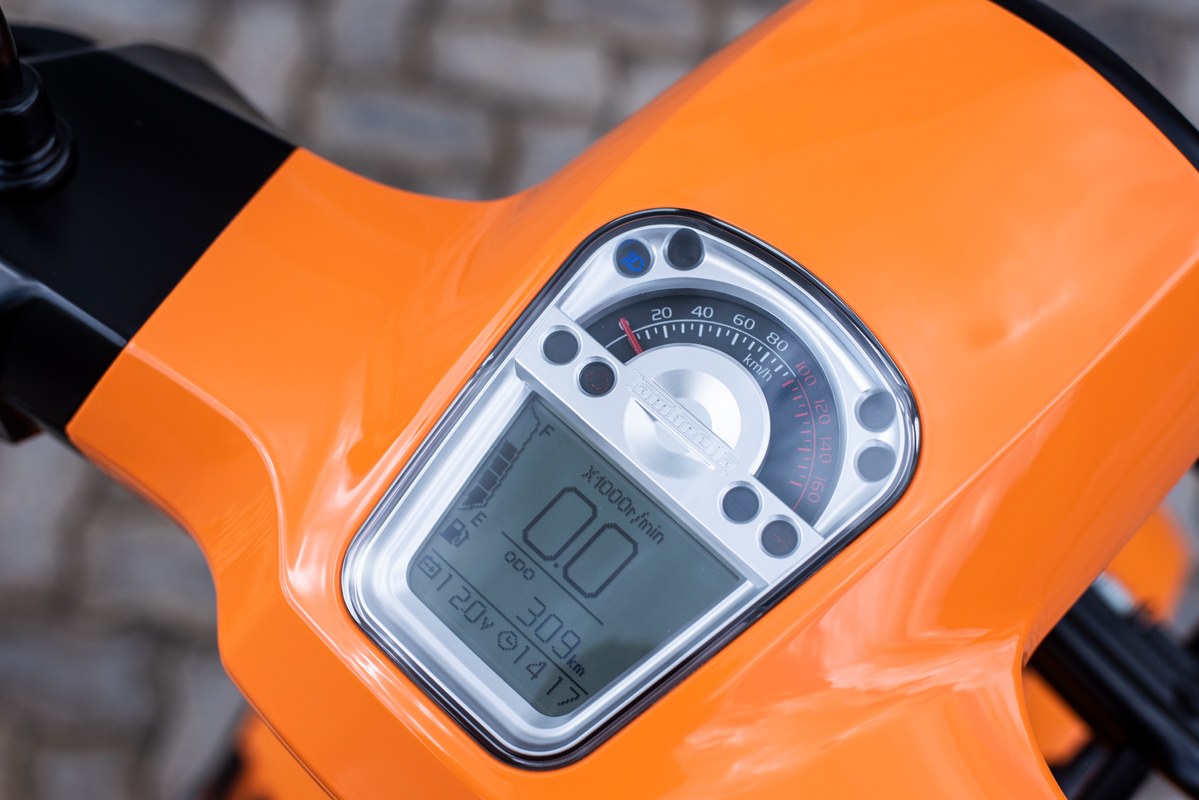
Handling is light and agile, courtesy of the low centre of gravity, however initially the scooter almost oversteered when rolled onto the side of the tyres. I found this a little odd, so I checked the front tyre pressure, so often the cause of strange steering maladies, and voila, sorted! The front tyre pressure was way too low and once brought to spec resulted in perfectly linear steering with perfect stability.
The seat is 800mm high and comfy. I didn’t test the two-up abilities but I’m sure it would work fine as a mom’s taxi, dropping a ‘littly’ at creche or primary school before scooting off to the shops or gym. Scooters are just so easy to use. Hop on, twist and go. Traffic is negated with disdain and frustration is minimised. I had huge fun nipping around on the Lambretta. With fuel at around R22 per litre, the miserly 2,9l/100 consumption of the Lambretta is a blessing. The bright orange paint job makes the rider highly visible to road users and, allied to the agility and superb brakes, offers a safe and cheery answer to cutting commuting time and costs.
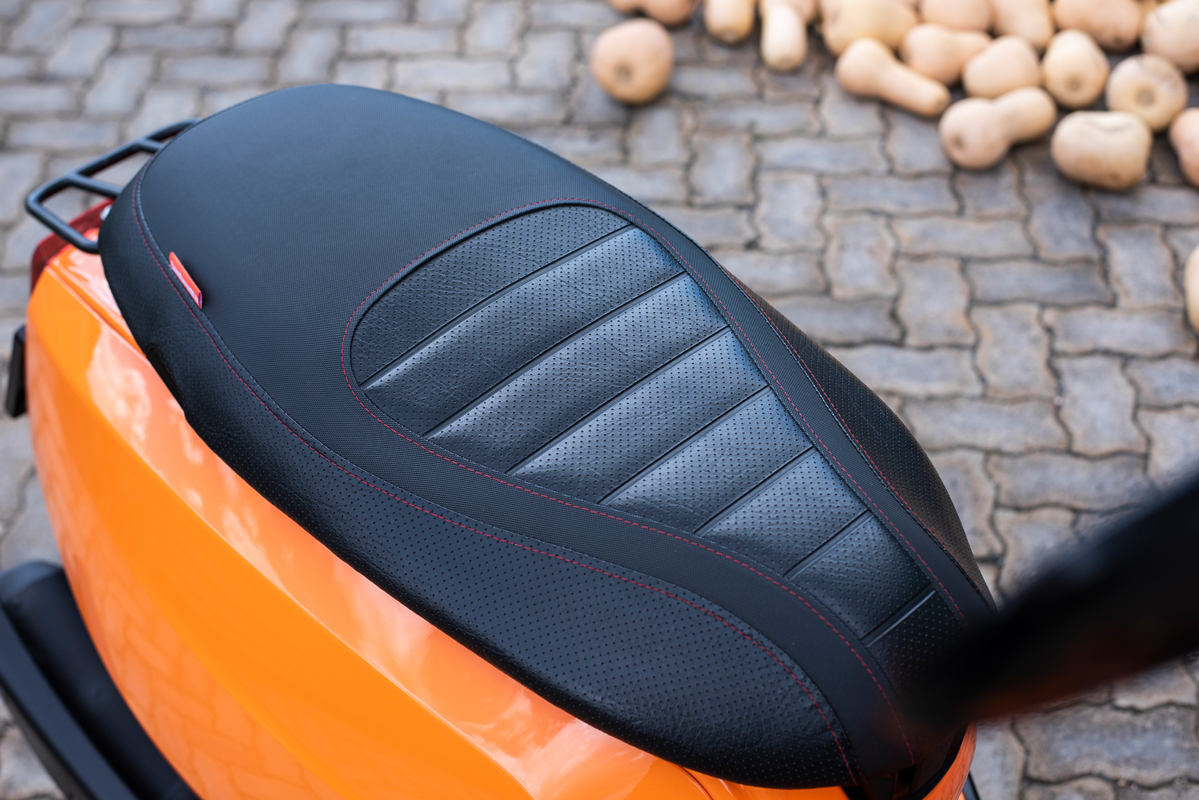
I keep asking myself how long it will take South Africans to wise up and start to really embrace two-wheelers to negate the ridiculous levels of traffic that we contend with in our cities. As someone who has used bikes daily as transport for the last 56 years, I cannot fathom why we have not copied the European example. Lambretta was birthed as a solution to inexpensive urban mobility. The need has never been more relevant than now. Used with common sense and situational awareness, scooters bring an extremely viable and fun solution to negating the cost and frustration of getting around the city. At a launch price of around R85,000, the Lambretta V200 will literally pay for itself over time with the fuel saving over your four-wheeled shopping basket. What you get for nothing is the fun factor!
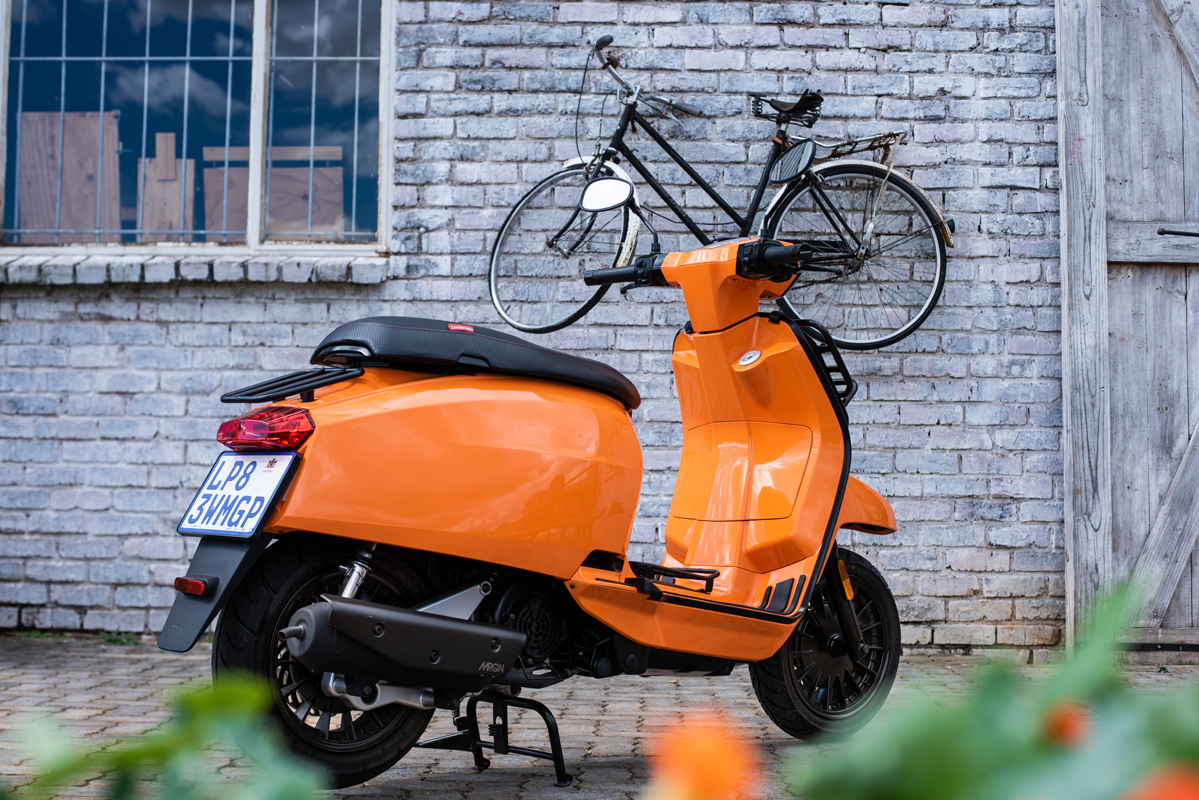
For more information on Lambretta in South Africa, contact: Clints Scoots




